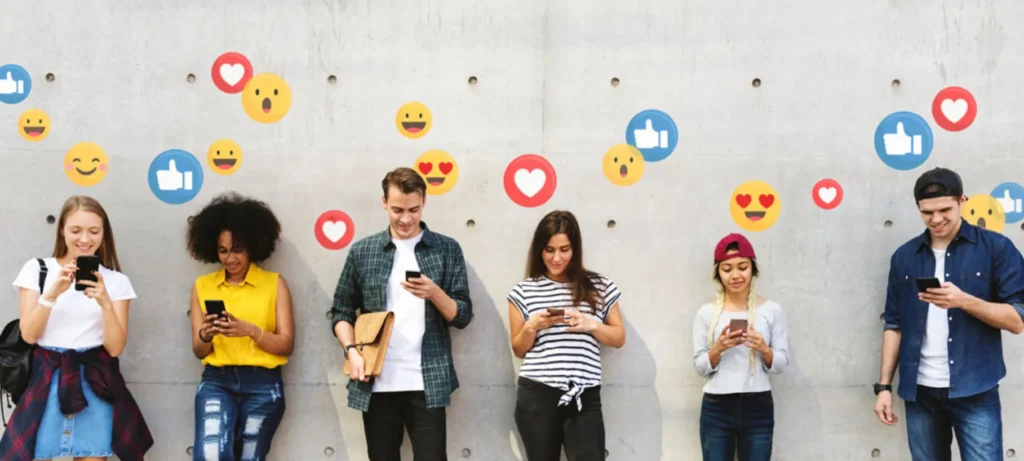With us being in the ending half of the new year’s first month, we face a whole new wave of blogs recapping 2021’s design trends and others about 2022’s design trend predictions. Admittedly, some designers can occasionally get stuck in their ways when it comes to design, which can lead to falling behind on things like the latest design trends. However, how relevant is it to follow design trends? There is an age-old saying of, “If it isn’t broken, why fix it?” Additionally, throughout history, trends tend to come and go fairly frequently. With that being said, it is also important to keep improving and expanding our designs, so that we don’t run the risk of missing the mark and creating something outdated. Here’s how your brand can tell which trends to follow and what to consider when leaving a bad fad behind.
Where Do Trends Originate?
While we think of trends as something that changes our designs into something new and contemporary, in concept, they have all been used in the past. Most often it was in other forms of art, and as one of the newer genres, design is sampling from the experimentation gone through the older ones. Some design trends are also just recycled concepts from the past. It’s not evident whether design trends originate from a top-down or bottom-up evolution. Experienced designers may introduce visual ideas for a specific marketing and branding project. Trends may also stem from non-professional work. With no branding guidelines and unlimited restrictions, student designers, who are encouraged to be extremely creative, can come up with original and exciting designs. In either case, with the help of the internet, these designs end up gaining traction and getting picked up by those looking to incorporate something new and original into their own work, even though such design concepts may not be applicable to several real-world projects.
“It’s Not A Phase, Mom” -Bad Fads
Let’s face it, most design trends when followed blindly are actually pretty bad. Remember, trendy does not mean valuable. Some examples of this would be Neumorphism (low functionality), Color palettes of the year (quickly outdated), skeuomorphic design (not applicable to many projects), and word art (just bad). Understandably, when first starting a career in graphic design, it can be difficult to identify the fads experienced designers know to avoid. When looking at design trends for the new year, ask yourself a few questions before deciding its worth.
-Does this design trend violate any of the fundamental design principles?
-Is it beneficial to the target audience?
-Will it hurt or help usability?
-Are there any legitimate examples out there successfully using it?
-When working with a client, does it go against their established branding or fit their needs?
-How does it fit in with what you’re already doing?
Keep in mind that design is more than just pretty pictures and layouts. It is a form of communication between you and your audience that conveys your ideas and who you are as a business, all while maintaining visual aesthetics.
Using Trends To Your Advantage
Not all trends are bad. Don’t be afraid to try something new. It might be something beneficial for you to keep in your back pocket for a future project. Great designers don’t ignore design trends; they study and understand them in order to better their work. Being able to keep up with and implement them is an important talent for designers to have. Keeping up with the trends doesn’t mean copying them. The goal is to allow yourself to be inspired by what others are doing and see what works best for you. They can also be a great way to get you out of your creative comfort zone and maybe even learn something new. Now, when it comes to working with clients who want to begin implementing new design trends, it is best to find a compromise between making something unique and bold but also familiar and safe. We must be careful about integrating trends into the professional world without strategic consideration. The last thing you want is your work to appear outdated because you’ve applied the latest design fad to your company or client for their long-term marketing or branding. The best advice to follow would be to ask yourself those questions from before and to find a good combination of the new and the old. Explore new ideas while incorporating established design principles and some timeless basics.
Ending Note
The design world is constantly changing, especially on the digital side, and as designers, we should always explore creative concepts and ideas. New ideas in the form of trends are continually being explored and successfully integrated into the digital environment. Keeping brand consistency and a form of clear communication and usability for your audience is still key though. The main takeaway I hope you all get from this would be to learn from the trends and do what works best for you and your company or clients after careful consideration. Here is an infographic from Venngage for “8 Graphic Design Trends that Will Define 2022” to help you get started with your research of 2022’s creative trends!
Check out some of our other blogs for more awesome inspiration and knowledge for creatives. Here are some recommendations to get you started!
Branding:
3 Tips for Better Usage of Your Brand’s Creative
Design:
How Color Gives Meaning To Design
What Is Typography And Why Is It Important
Inspiration/Tips:
